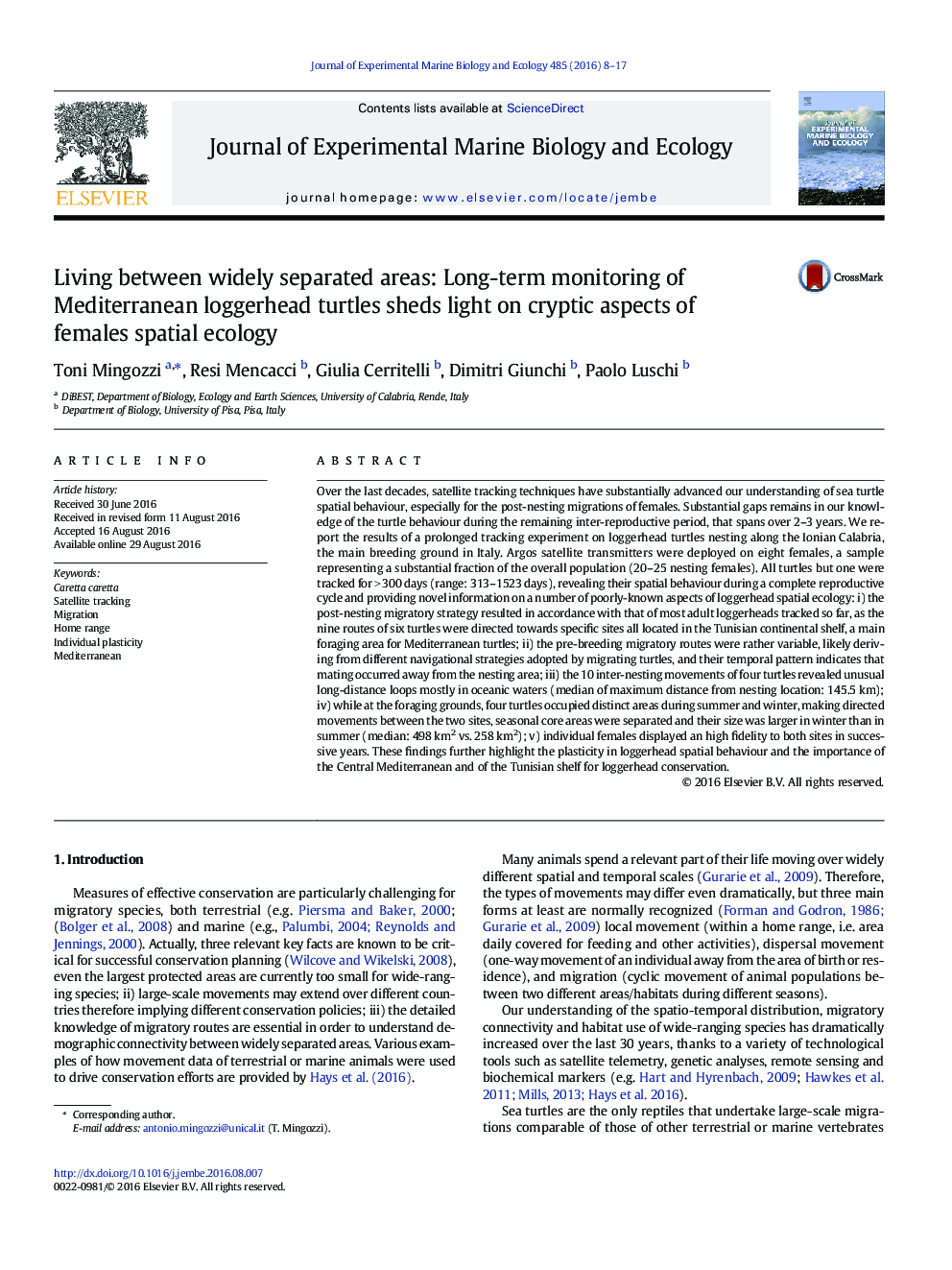| Article ID | Journal | Published Year | Pages | File Type |
|---|---|---|---|---|
| 4395186 | Journal of Experimental Marine Biology and Ecology | 2016 | 10 Pages |
•An extraordinarily prolonged tracking experiment was performed on loggerhead turtles•During inter-nesting, turtles made unusual long-distance loops in oceanic waters•Turtles migrated towards specific foraging sites along the African continental shelf•Turtles occupied distinct seasonal foraging areas, displaying high fidelity to them•One of the few cases where the elusive pre-nesting migrations of females were tracked
Over the last decades, satellite tracking techniques have substantially advanced our understanding of sea turtle spatial behaviour, especially for the post-nesting migrations of females. Substantial gaps remains in our knowledge of the turtle behaviour during the remaining inter-reproductive period, that spans over 2–3 years. We report the results of a prolonged tracking experiment on loggerhead turtles nesting along the Ionian Calabria, the main breeding ground in Italy. Argos satellite transmitters were deployed on eight females, a sample representing a substantial fraction of the overall population (20–25 nesting females). All turtles but one were tracked for > 300 days (range: 313–1523 days), revealing their spatial behaviour during a complete reproductive cycle and providing novel information on a number of poorly-known aspects of loggerhead spatial ecology: i) the post-nesting migratory strategy resulted in accordance with that of most adult loggerheads tracked so far, as the nine routes of six turtles were directed towards specific sites all located in the Tunisian continental shelf, a main foraging area for Mediterranean turtles; ii) the pre-breeding migratory routes were rather variable, likely deriving from different navigational strategies adopted by migrating turtles, and their temporal pattern indicates that mating occurred away from the nesting area; iii) the 10 inter-nesting movements of four turtles revealed unusual long-distance loops mostly in oceanic waters (median of maximum distance from nesting location: 145.5 km); iv) while at the foraging grounds, four turtles occupied distinct areas during summer and winter, making directed movements between the two sites, seasonal core areas were separated and their size was larger in winter than in summer (median: 498 km2 vs. 258 km2); v) individual females displayed an high fidelity to both sites in successive years. These findings further highlight the plasticity in loggerhead spatial behaviour and the importance of the Central Mediterranean and of the Tunisian shelf for loggerhead conservation.
